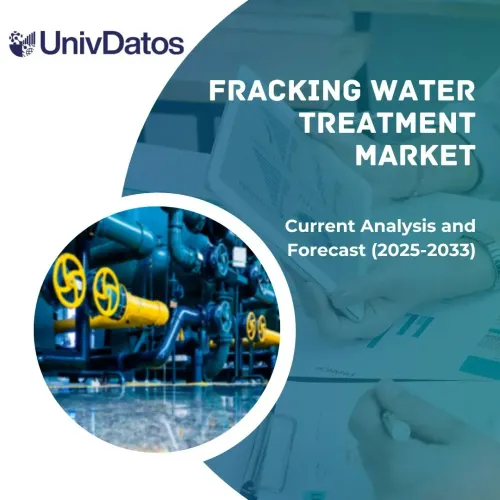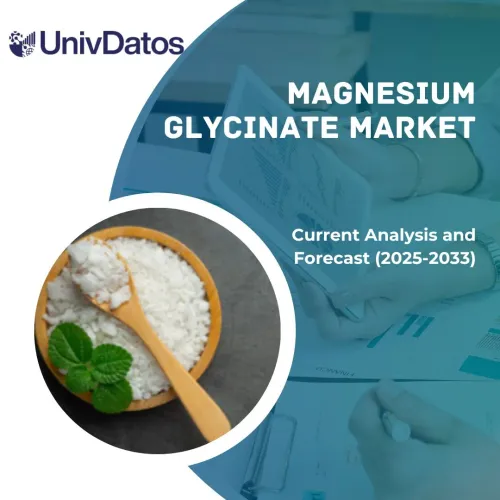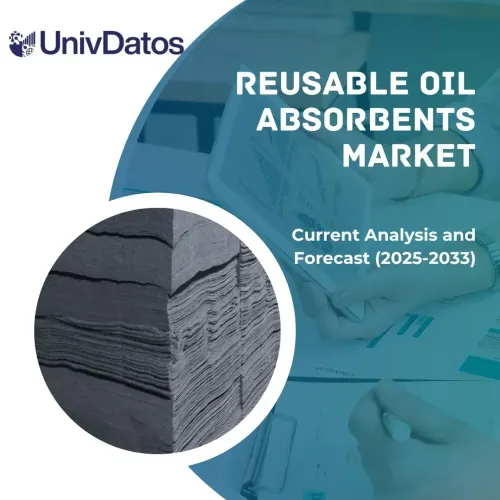- Accueil
- À propos de nous
- Industrie
- Services
- Lecture
- Contactez-nous
Marché de la gestion des déchets industriels : analyse actuelle et prévisions (2021-2027)
Accent mis sur le service (collecte, recyclage, incinération, mise en décharge) ; Type (dangereux et non dangereux) ; Application (pharmaceutique, pâtes et papiers, alimentation et boissons, électronique, automobile et autres) ; et Région/Pays
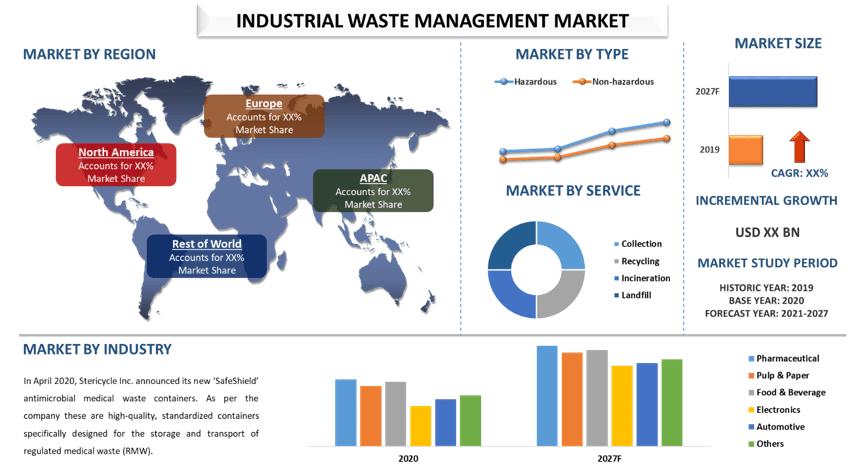
DEMANDER UN EXEMPLE DE PDF GRATUIT
Le marché de la gestion des déchets industriels devrait croître à un TCAC d'environ 6 % entre 2021 et 2027. Les principaux facteurs qui influencent la croissance du marché de la gestion des déchets sont la croissance démographique dans le monde, l'industrialisation dans les économies en développement et la sensibilisation accrue à la gestion des déchets et au recyclage dans le monde. Avec la population croissante et l'urbanisation rapide dans la plupart des pays, les déchets générés dans le monde entier augmentent. Le monde a généré 2,01 milliards de tonnes de déchets solides en 2016, ce nombre devrait augmenter de 70 % d'ici 2050, produisant 3,40 milliards de tonnes de déchets cette année-là. Tous ces déchets doivent être correctement traités pour éviter la pollution, ce qui peut entraîner des problèmes de santé et économiques. En outre, la sensibilisation accrue au recyclage et à la durabilité encourage également les gouvernements à investir dans de meilleurs traitements de gestion des déchets. Cela crée ainsi d'énormes opportunités pour les acteurs proposant des solutions et des services de gestion des déchets industriels pendant la période de prévision.
SUEZ SA, Veolia Environnement S.A, Waste Management Inc., Stericycle Inc., Remondis, Daiseki Co. Ltd., Clean Harbors Inc., Biffa plc, Covanta Holding Corporation et Sembcorp Industries sont quelques-uns des principaux acteurs opérant sur le marché de la gestion des déchets industriels. Plusieurs fusions et acquisitions ainsi que des partenariats ont été entrepris par ces acteurs pour faciliter l'accès des clients à des produits/technologies de haute technologie et innovants.
Aperçus présentés dans le rapport
« Parmi les services, la catégorie Collecte a détenu une part importante en 2020 »
Sur la base des services, le marché est divisé en collecte, recyclage, incinération et mise en décharge. En 2020, les services de collecte ont représenté la part la plus importante du marché mondial de la gestion des déchets industriels. Les déchets industriels présentent des risques pour l'environnement et la santé humaine et peuvent entraîner une contamination du sol, de l'air et de l'eau s'ils ne sont pas éliminés correctement. Par conséquent, il est important que les industries collectent correctement les déchets en séparant les déchets par type pour une élimination efficace. De plus, avec une sensibilisation croissante à la gestion des déchets industriels, les principaux acteurs du marché se développent dans différentes zones géographiques et offrent tous les types de services de gestion des déchets. Par exemple, SUEZ SA propose plusieurs systèmes de collecte tels que des services de collecte multi-flux, la collecte des déchets organiques (biodéchets) et des déchets verts, la collecte des DEEE (déchets d'équipements électriques et électroniques) et des points de collecte pour les déchets dangereux (solvants, piles, peintures, déchets biomédicaux).
« Parmi les types, la catégorie Dangereux devrait connaître le gain progressif le plus élevé au cours de la période de prévision »
Sur la base du type, le marché est divisé en dangereux et non dangereux. Parmi les deux, la gestion des déchets dangereux devrait connaître une forte croissance au cours de la période de prévision. La préoccupation croissante concernant le traitement et l'élimination appropriés des déchets industriels dangereux est l'un des principaux facteurs qui stimulent la croissance de la catégorie. En outre, la gestion des déchets dangereux est un processus qui comprend la collecte, le recyclage, le traitement, le transport, l'élimination et la surveillance des sites d'élimination des déchets. Dans le scénario actuel des pays en développement, les déchets dangereux sont souvent rejetés directement dans l'environnement, ce qui présente des risques pour la santé et l'environnement. Ainsi, grâce à des pratiques de traitement des déchets appropriées, les propriétés des déchets industriels dangereux peuvent être modifiées et ils peuvent être rendus moins nocifs. Cela comprend le traitement physique, le traitement chimique et le traitement biologique.
« Parmi les industries, la catégorie Pharmaceutique devrait connaître le TCAC le plus élevé »
Sur la base de l'industrie, le marché de la gestion des déchets industriels a été divisé en pharmaceutique, pâtes et papiers, aliments et boissons, électronique, automobile et autres. Parmi ceux-ci, la gestion des déchets de l'industrie pharmaceutique continuera de croître à un rythme soutenu au cours de la période de prévision. Cela est principalement dû aux mandats gouvernementaux stricts pour la collecte et l'élimination des déchets hautement toxiques et organiques générés par l'industrie. En outre, divers acteurs de l'industrie ont augmenté leurs investissements et s'orientent vers des méthodes durables de collecte et de traitement des déchets, principalement pour réduire les effets nocifs des déchets sur l'environnement ainsi que sur la santé humaine. Par exemple, en avril 2020, Stericycle Inc. a annoncé ses nouveaux conteneurs antimicrobiens pour déchets médicaux « SafeShield ». Selon l'entreprise, il s'agit de conteneurs normalisés de haute qualité, spécialement conçus pour le stockage et le transport des déchets médicaux réglementés (RMW). Cette nouvelle gamme de conteneurs offre aux clients une conception améliorée, de meilleures options de stockage et un niveau de protection supplémentaire pour aider à lutter contre la croissance des micro-organismes sur les conteneurs RMW.
« La zone APAC devrait être la région à la croissance la plus rapide sur le marché mondial de la gestion des déchets industriels au cours de la période 2021-2027F »
Au cours de la période de prévision, la zone APAC devrait connaître le TCAC le plus élevé en raison de l'industrialisation en cours et de l'inclinaison croissante des consommateurs vers les produits manufacturés, ce qui a alimenté les niveaux de production manufacturière, influençant positivement le paysage mondial de l'industrie de la gestion des déchets solides industriels. Cela a également contraint les pays en développement comme la Chine et l'Inde à se concentrer sur la gestion des déchets industriels et à traiter des quantités plus importantes de matériaux plus diversifiés. De plus, les pays en développement accueillent fréquemment des industries à forte intensité de déchets dangereux telles que le raffinage du pétrole, la pétrochimie, la fabrication de produits pharmaceutiques et la production de métaux. Cependant, des réglementations gouvernementales strictes et une sensibilisation accrue dans les industries au traitement des déchets dangereux devraient stimuler le marché au cours de la période de prévision. En Inde, les industries sont tenues de collecter et d'éliminer leurs déchets sur des sites d'élimination spécifiques et cette collecte, ce traitement et cette élimination doivent être surveillés par le State Pollution Control Board (SPCB) ou le Pollution Control Committee (PCC) concerné dans le territoire de l'Union.
Raisons d'acheter ce rapport :
- L'étude comprend une analyse de la taille et des prévisions du marché validée par des experts clés authentifiés de l'industrie
- Le rapport présente un aperçu rapide de la performance globale de l'industrie en un coup d'œil
- Le rapport couvre une analyse approfondie des principaux pairs de l'industrie en mettant l'accent sur les principales données financières de l'entreprise, le portefeuille de produits, les stratégies d'expansion et les développements récents
- Examen détaillé des moteurs, des contraintes, des principales tendances et des opportunités qui prévalent dans l'industrie
- L'étude couvre de manière exhaustive le marché à travers différents segments
- Analyse approfondie au niveau régional de l'industrie
Options de personnalisation :
Le marché de la gestion des déchets industriels peut être davantage personnalisé selon les besoins ou tout autre segment de marché. En outre, UMI comprend que vous pouvez avoir vos propres besoins commerciaux, alors n'hésitez pas à nous contacter pour obtenir un rapport qui répond parfaitement à vos exigences.
Table des matières
L'analyse du marché historique, l'estimation du marché actuel et la prévision du marché futur de la gestion des déchets industriels ont été les trois étapes majeures entreprises pour créer et analyser l'adoption de la gestion des déchets industriels dans les principales régions du monde. Des recherches secondaires exhaustives ont été menées pour collecter les chiffres du marché historique et estimer la taille actuelle du marché. Deuxièmement, pour valider ces informations, de nombreuses conclusions et hypothèses ont été prises en considération. De plus, des entretiens primaires exhaustifs ont également été menés avec des experts de l'industrie à travers la chaîne de valeur du marché de la gestion des déchets industriels. Après l'hypothèse et la validation des chiffres du marché par le biais d'entretiens primaires, nous avons utilisé une approche descendante/ascendante pour prévoir la taille complète du marché. Par la suite, des méthodes de ventilation du marché et de triangulation des données ont été adoptées pour estimer et analyser la taille du marché des segments et sous-segments auxquels l'industrie appartient. La méthodologie détaillée est expliquée ci-dessous :
Demander plus de détails sur la méthodologie de recherche
Analyse de la taille du marché historique
Étape 1 : Étude approfondie des sources secondaires :
Une étude secondaire détaillée a été menée pour obtenir la taille du marché historique de la gestion des déchets industriels à partir de sources internes à l'entreprise telles que les rapports annuels et les états financiers, les présentations de performance, les communiqués de presse, etc., et de sources externes, notamment les revues, les actualités et les articles, les publications gouvernementales, les publications des concurrents, les rapports sectoriels, les bases de données tierces et d'autres publications crédibles.
Étape 2 : Segmentation du marché :
Après avoir obtenu la taille du marché historique de la gestion des déchets industriels, nous avons mené une analyse secondaire détaillée pour recueillir des informations sur le marché historique et les parts des différents segments et sous-segments pour les principales régions. Les principaux segments inclus dans le rapport sont les services, le type et l'industrie. Des analyses plus poussées au niveau des pays ont été menées pour évaluer l'adoption globale de la gestion des déchets industriels dans cette région.
Étape 3 : Analyse des facteurs :
Après avoir acquis la taille du marché historique des différents segments et sous-segments, nous avons mené une analyse des facteurs détaillée pour estimer la taille actuelle du marché de la gestion des déchets industriels. De plus, nous avons mené une analyse des facteurs en utilisant des variables dépendantes et indépendantes telles que la numérisation croissante des industries et l'urbanisation dans les pays en développement. Une analyse approfondie a été menée pour les scénarios de demande et d'offre en tenant compte des principaux partenariats, des fusions et acquisitions, de l'expansion des activités et des lancements de produits dans le secteur de la gestion des déchets industriels à travers le monde.
Estimation et prévision de la taille actuelle du marché
Taille actuelle du marché : Sur la base des informations exploitables tirées des 3 étapes ci-dessus, nous sommes parvenus à la taille actuelle du marché, aux principaux acteurs du marché de la gestion des déchets industriels et aux parts de marché des segments. Tous les pourcentages de parts requis et les ventilations du marché ont été déterminés à l'aide de l'approche secondaire susmentionnée et ont été vérifiés par le biais d'entretiens primaires.
Estimation et prévision : Pour l'estimation et la prévision du marché, des poids ont été attribués à différents facteurs, notamment les moteurs et les tendances, les contraintes et les opportunités offertes aux parties prenantes. Après avoir analysé ces facteurs, des techniques de prévision pertinentes, c'est-à-dire une approche descendante/ascendante, ont été appliquées pour parvenir à la prévision du marché d'environ 2027 pour différents segments et sous-segments sur les principaux marchés mondiaux. La méthodologie de recherche adoptée pour estimer la taille du marché comprend :
- La taille du marché de l'industrie, en termes de valeur (US$) et le taux d'adoption de la gestion des déchets industriels sur les principaux marchés nationaux
- Tous les pourcentages de parts, les divisions et les ventilations des segments et sous-segments du marché
- Les principaux acteurs du marché de la gestion des déchets industriels en termes de produits offerts. De plus, les stratégies de croissance adoptées par ces acteurs pour concurrencer sur le marché en pleine croissance
Validation de la taille et de la part du marché
Recherche primaire : Des entretiens approfondis ont été menés avec les principaux leaders d'opinion (KOL), notamment les cadres de haut niveau (CXO/VP, chef des ventes, chef du marketing, chef des opérations et chef régional, chef de pays, etc.) dans les principales régions. Les résultats de la recherche primaire ont ensuite été résumés et une analyse statistique a été effectuée pour prouver l'hypothèse énoncée. Les informations issues de la recherche primaire ont été regroupées avec les résultats secondaires, transformant ainsi l'information en informations exploitables.
Répartition des participants primaires dans les différentes régions
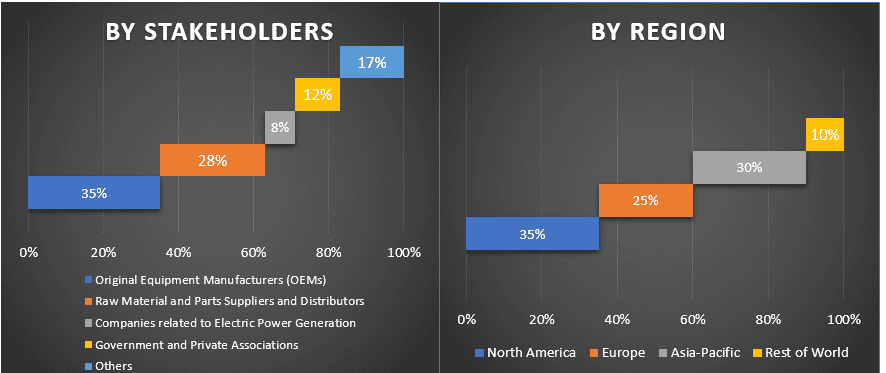
Ingénierie du marché
La technique de triangulation des données a été employée pour compléter l'estimation globale du marché et pour parvenir à des chiffres statistiques précis pour chaque segment et sous-segment du marché de la gestion des déchets industriels. Les données ont été divisées en plusieurs segments et sous-segments après avoir étudié divers paramètres et tendances dans les domaines du service, du type et de l'industrie du marché de la gestion des déchets industriels.
L'objectif principal de l'étude de marché sur la gestion des déchets industriels
Les tendances actuelles et futures du marché de la gestion des déchets industriels ont été mises en évidence dans l'étude. Les investisseurs peuvent obtenir des informations stratégiques pour fonder leur discrétion en matière d'investissements à partir de l'analyse qualitative et quantitative effectuée dans l'étude. Les tendances actuelles et futures du marché ont déterminé l'attrait global du marché au niveau régional, offrant une plateforme aux participants industriels pour exploiter le marché inexploité afin de bénéficier d'un avantage de premier entrant. Les autres objectifs quantitatifs des études comprennent :
- Analyser la taille actuelle et prévisionnelle du marché de la gestion des déchets industriels en termes de valeur (US$). De plus, analyser la taille actuelle et prévisionnelle du marché des différents segments et sous-segments
- Les segments de l'étude comprennent les domaines du service, du type et de l'industrie.
- Définir et analyser le cadre réglementaire de l'industrie de la gestion des déchets industriels
- Analyser la chaîne de valeur impliquée avec la présence de divers intermédiaires, ainsi qu'analyser les comportements des clients et des concurrents de l'industrie
- Analyser la taille actuelle et prévisionnelle du marché de la gestion des déchets industriels pour la région principale
- Les principales régions étudiées dans le rapport comprennent l'Amérique du Nord (États-Unis, Canada et reste de l'Amérique du Nord), l'Europe (Allemagne, Royaume-Uni, France, Espagne, Italie et reste de l'Europe), l'Asie-Pacifique (Chine, Japon, Inde, Corée du Sud et autres) et le reste du monde
- Profils d'entreprises du marché de la gestion des déchets industriels et stratégies de croissance adoptées par les acteurs du marché pour se maintenir sur le marché en pleine croissance
- Analyse approfondie au niveau régional de l'industrie
Connexes Rapports
Les clients qui ont acheté cet article ont également acheté




